The week at a glance
- Hooded Mergansers in Co Donegal
- Moltoni's Warbler on Fair Isle
- Balearic Woodchat Shrike in North Yorkshire
- Small influx of rare and scarce herons
- Strong passage of Long-tailed and Pomarine Skuas
The previous four weeks weeks had produced an excellent series of extreme rarities among what has otherwise been a decidedly average (and, for some, even muted) spring season — mid-April's huge passage of Ring Ouzels aside, migrant numbers haven't exactly been ground-breaking with no particularly spectacular movements of species such as terns and waders. That said, the spontaneity and excitement caused by the likes of Citril Finch, Hudsonian Godwit and Great Blue Heron hardly make the first half of spring a disappointment, and this week continued the theme with a delivery of further high-calibre rarities.
Arguably birds of the week, a pair of Hooded Mergansers was a fine discovery on windswept Tory Island, off the coast of Co Donegal, on 19th. Following a period of westerly weather and at peak migration time, there seems no reason to consider these birds anything but wild — that is unless they go on to disgrace themselves (or indeed display any damning plastic).
Another Moltoni's Warbler was identified on Fair Isle, Shetland, on 15th and was still there on 19th. While this newly adopted species is currently awarded 'mega' status based on the current paucity of accepted records, a series of recent occurrences could suggest that Moltoni's will eventually prove more regular in occurrence than expected. Another taxon previously considered extremely rare that has been relatively frequent over the past decade is Balearic Woodchat Shrike, and a bird at Wykeham Forest, N Yorks, on 13th continued the contemporary trend.
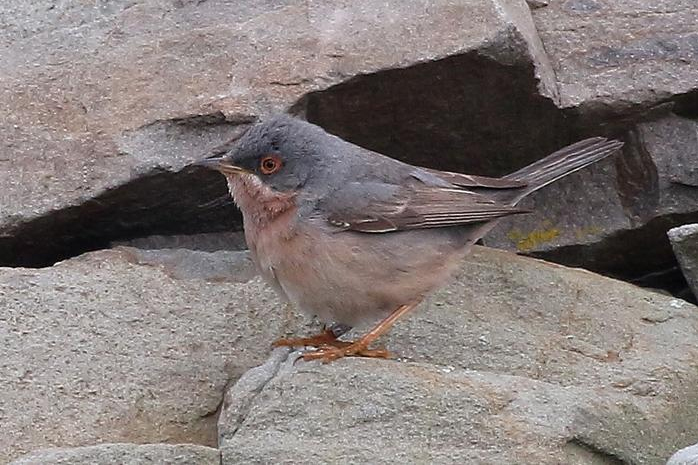
Moltoni's Warbler, Fair Isle, Shetland (Photo: Stephen D Keightley)

Balearic Woodchat Shrike, Wykeham Forest, North Yorkshire (Photo: Alex Meek)
Following last week's mesmerising totals from North Uist, it was no surprise that the continuing westerly weather systems produced some further spectacular counts of the two scarcer skua species from northern and western Scotland. Shetland did extremely well with 645 Long-tailed and 485 Pomarine Skuas past Esha Ness on 13th. Funnily enough the Outer Hebrides remained quiet that day but hit back in a massive way on 16th as 847 Long-tailed and 911 Pomarine passed by.
A fruitful week for overshooting herons included at least five Squacco Herons in the south-west of England. A bird lingered on St Mary's, Scilly, from 14th while in Cornwall birds were at Nanjizal on 15th, Land's End from 15-17th and both Lizard village and Goonhilly Downs on 16th. In Devon, records from South Milton Ley on 13th, Beesands Ley on 16-17th and Slapton Ley on 17th probably relate to more than one individual.

Squacco Heron, South Milton Ley, Devon (Photo: Alan Doidge)
Following one found dead at St Buryan, Cornwall, on 12th, live male Little Bitterns graced St Mary's, Scilly, from 13th and Lakenheath Fen, Suffolk, on 16th. A Night Heron also remained on St Mary's, while Cornish records came from Helston Loe Pool on 17th and Tresemple Pool on 17-18th. A handful of Purple Herons included the (presumably) long-staying adult in the Drift Reservoir environs and Scilly records from Bryher and St Martins; elsewhere, one remained at Lodmoor, Dorset, while 13th saw the arrival of birds at Rye Harbour, E Sussex, and Dungeness, Kent. A single Cattle Egret was at Kenardington, Kent, from 15th and White Stork records came from Avon and Ceredigion.

Little Bittern, St Mary's, Isles of Scilly (Photo: Joe Pender)
The Harlequin Duck remained on the River Don, Aberdeen, throughout the week and a stay in to next autumn is looking increasingly possible. Just up the coast, 'Elvis' the drake King Eider continued to perform outrageously well on the Ythan Estuary. A drake Surf Scoter bombed past Wats Ness, Shetland, on 13th and another was seen at Loch na Keal, Mull, that day.
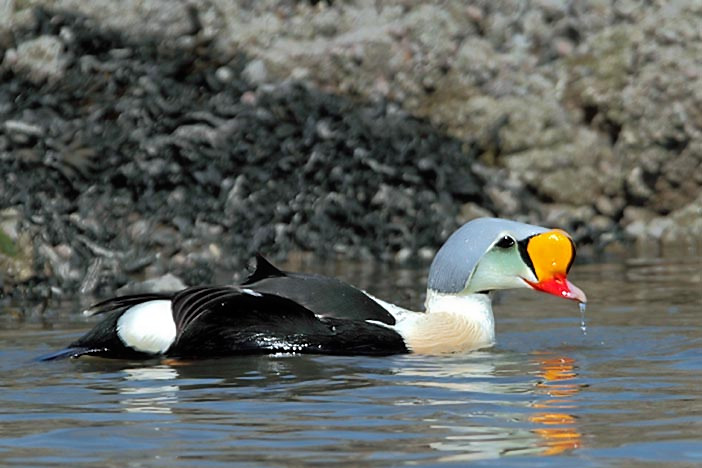
King Eider, Ythan Estuary, Aberdeenshire (Photo: Jeff Hazell)
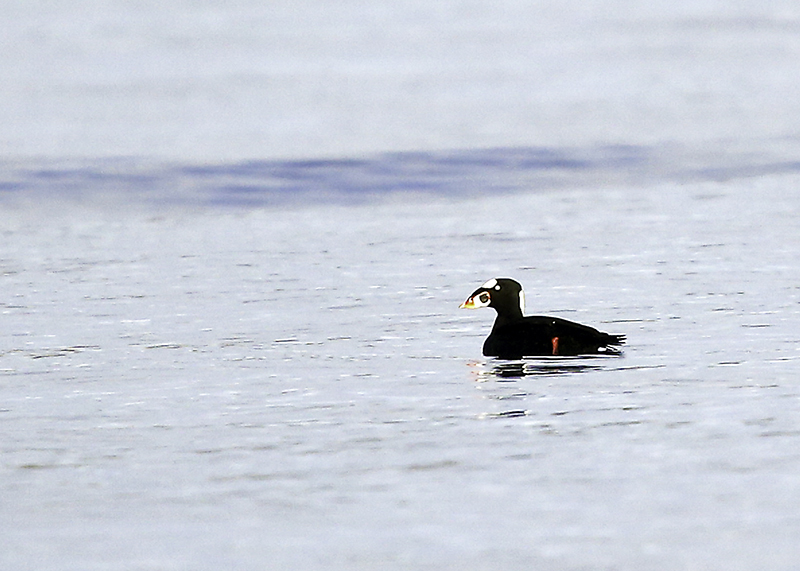
Surf Scoter, Loch na Keal, Mull, Argyll (Photo: Marcus Conway - ebirder)
A drake Green-winged Teal was at Lochwinnoch, Clyde, on 14th and two Ring-necked Ducks at Levenwick, Shetland, on 17th later relocated to Loch of Hillwell. The drake Lesser Scaup, bearing its red nasal saddle, was last seen in West Yorkshire on 17th while Black Brants were still at Spurn, E Yorks, and Frampton Marsh, Lincs.
A male Red-footed Falcon circled over Brent Reservoir on 15th and was followed by a record from Grove Ferry, Kent, on 17th. Several Black Kites were again reported but were typically all flyovers; although there were records from five counties, just one was tracked (around Kent on 17th). A handful of Honey Buzzards included Shetland's first of the year, brilliantly photographed at Sumburgh on 19th.
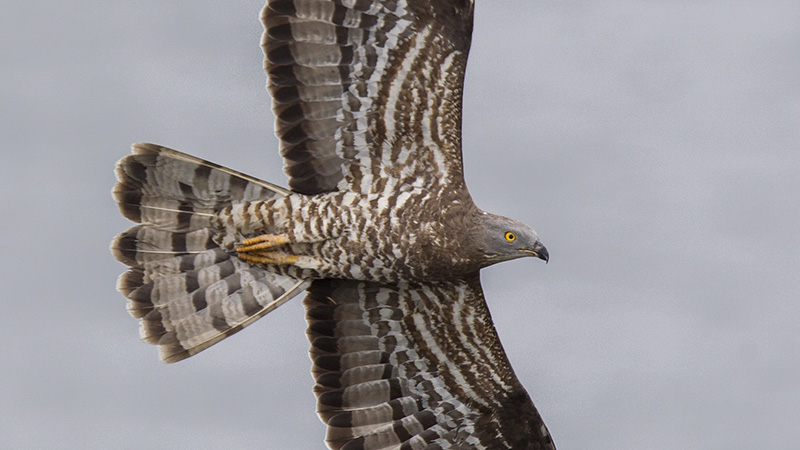
Honey Buzzard, Sumburgh, Mainland, Shetland (Photo: Gordon McCall)
The Greater Yellowlegs behaved itself at Titchfield Haven and showed well at times throughout the week; Northumberland's Lesser Yellowlegs was last seen at Low Newton-by-the-Sea on 13th though the Pectoral Sandpiper lingered until the following day. Other Pecs were at Cemlyn Bay, Anglesey, on 13th, Tacumshin, Co Wexford, on 16th and Cley, Norfolk, on 19th. A migrant Red-necked Phalarope graced Minsmere, Suffolk, on 18th, with others at Broom Gravel Pits, Beds, and Annesley Pit Top, Notts, on 19th. Dotterel have been a near-constant feature in the Choseley area of Norfolk since the second week of April, and up to 23 were seen throughout this week. Flocks of 10 and three were in Aberdeenshire, four touched down on South Uist and Fair Isle, seven were on Sanday, Orkney, on 13th and single birds were seen in Ayrshire, North Yorkshire and East Yorkshire. A Black-winged Stilt was on Jersey on 14th.
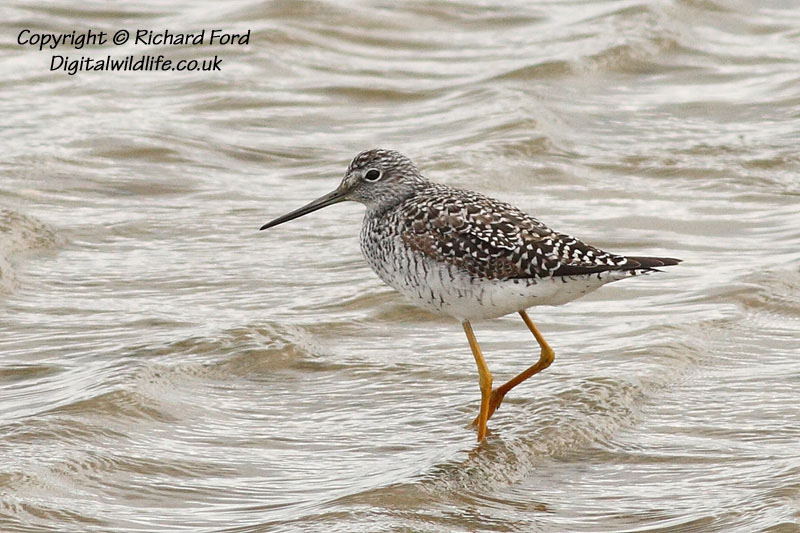
Greater Yellowlegs, Titchfield Haven NNR, Hampshire (Photo: Richard Ford)
The young Ring-billed Gull looks set to stay the summer at Hayle Estuary, Cornwall, while another second-calendar-year bird was in Tralee, Co Kerry, on 14th. Southampton's Bonaparte's Gull lingered another week while on 16th an adult was at Dungeness, Kent, where there were also two White-winged Black Terns on 14-15th.

White-winged Black Terns, Dungeness RSPB, Kent (Photo: Adam Whitehouse)
Golden Oriole numbers remained healthy after the recent influx, while at least eight Hoopoes included a bird as far north as Unst on 18-19th. Just a couple of Wrynecks were reported (on North Uist and the Isles of Scilly) while European Bee-eaters were in Kent, East Sussex, Norfolk, Lincolnshire/East Yorkshire (2) and Co Mayo, the latter individual lingering at Blacksod from 14-19th.

Hoopoe, Clibberswick, Unst, Shetland (Photo: Mike Pennington)
An Alpine Swift was reported over Lyme Regis, Dorset, on 14th and five Red-rumped Swallows were found, in Dorset, Surrey and East, West and North Yorkshire. A Short-toed Lark remained on St Martin's, Scilly, to 16th and up to two were on Fair Isle, where there was also a Tawny Pipit from 17th. Continuing the rich vein of form for this newly upgraded BBRC rarity, Red-throated Pipits were reported from South Shields, Durham, on 14th and Westleton Heath, Suffolk, on 15th. Grey-headed Wagtail records came from East Yorkshire, Anglesey, Norfolk and Suffolk, while Red-spotted Bluethroats were on Fair Isle, at Minsmere, Suffolk, on 15th and West Bexington, Dorset, on 17th.

Red-spotted Bluethroat, Minsmere RSPB, Suffolk (Photo: Jan Mellowship)
A first-summer male Sardinian Warbler was at Land's End, Cornwall, from 14-17th and a female subalpine warbler was at Rubha Ardvule, South Uist, on 14th. The first Great Reed Warbler of 2015 sang for a day at Sandwell Valley, W Mids, on 18th, while an Icterine Warbler was reported at Berrow, Somerset, on 13th. The isles of Portland and Skokholm are classic Melodious Warbler locations, and both claimed birds on 15th.
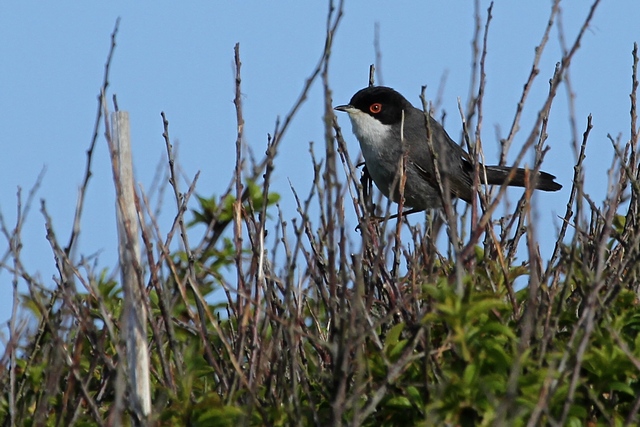
Sardinian Warbler, Land's End, Cornwall (Photo: Sam Viles)

Great Reed Warbler, Sandwell Valley RSPB, West Midlands (Photo: Alex Barclay)
A Woodchat Shrike reached as far north as North Ronaldsay, Orkney, on 19th; two were seen in Cornwall during the week, with further records from Scilly and Co Cork. Red-backed Shrikes were at a premium with just two seen: at Landguard, Suffolk, on 16th (a male) and Pingewood, Berks, on 17th. A Rose-coloured Starling arrived at Ardivachar, S Uist, on 19th, while European Serins were seen at Landguard on 16th and Selsey Bill, W Sussex, on 17th. A yellow variant House Finch in Thorpe St Andrew, Norfolk, was an inevitable escapee. A Rustic Bunting was on Fair Isle on 19th.
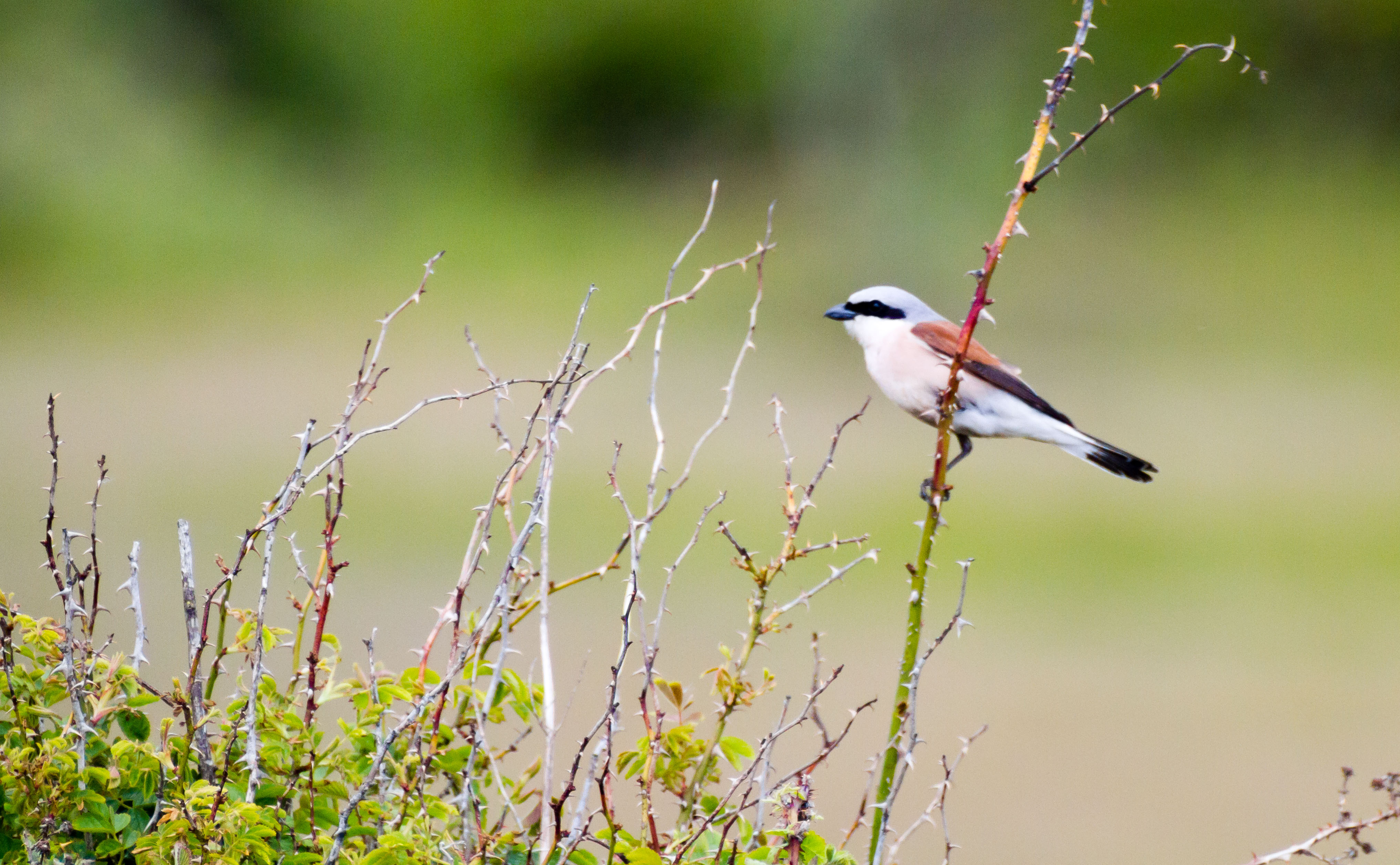
Red-backed Shrike, Landguard NR, Suffolk (Photo: Matthew Kirkland)
Western Palearctic news
Thrilling belated news from Western Sahara concerned the discovery of a Golden Nightjar, unfortunately later found dead, along the Aousserd Road on 3 May — this represents the first Western Palearctic record, though there is a previous claim from Morocco. Massively significant on a regional scale was a Kurdish Wheatear near Clermont-Ferrand, in the very heart of France, on 18-19th — a simply remarkable record of this restricted-range Middle Eastern species.
Further belated news concerned an immature Tawny Eagle photographed at Marsa Alam, Egypt, on 8 May, while Italy's third Sooty Falcon was found on Linosa island on 19th. Turkey's first Sykes's Warbler was photographed on 18th, and on the same date the second Grey Hypocolius in Israel this spring was near Eilat.
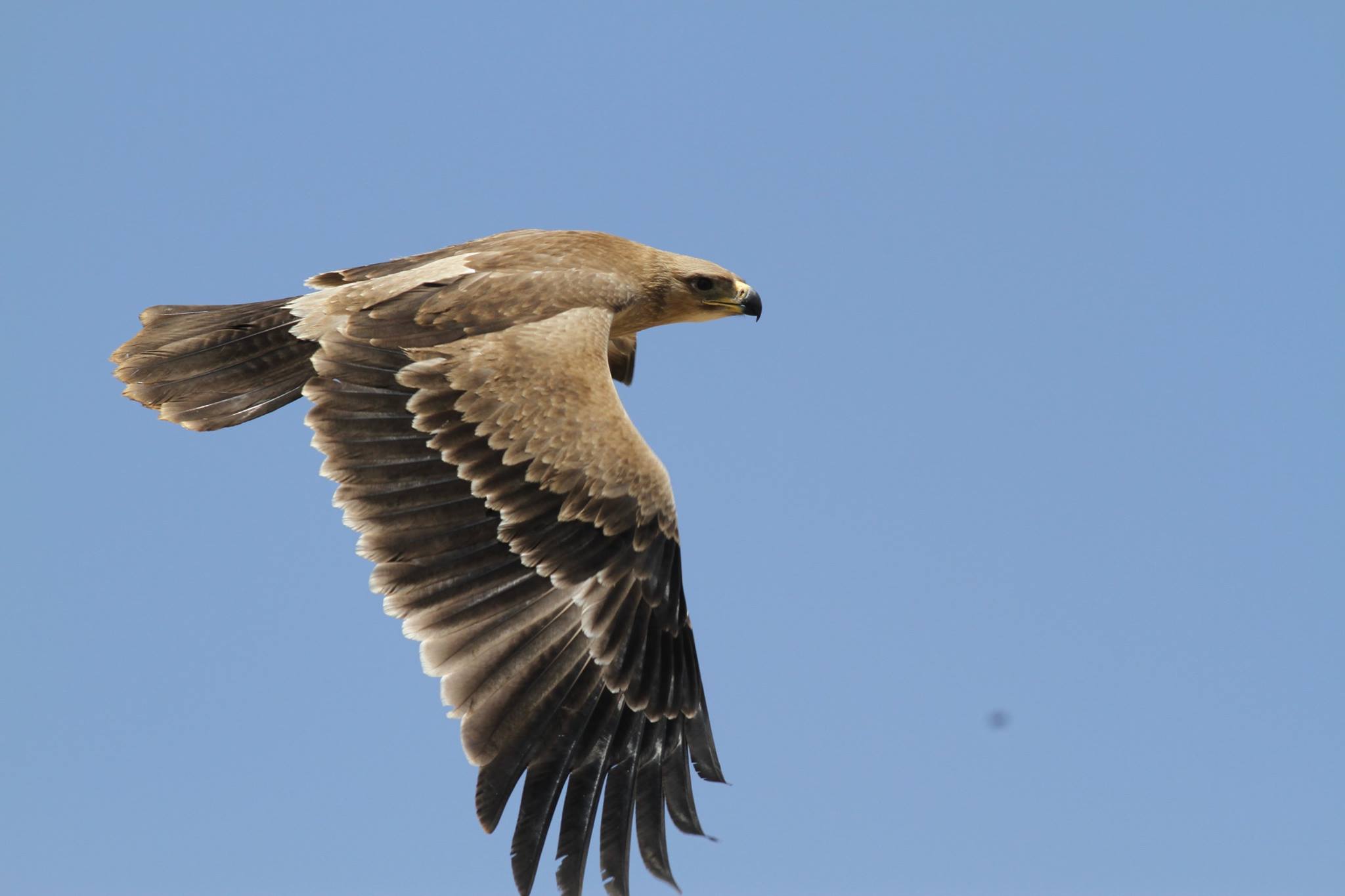
Tawny Eagle, Egypt (Photo: Lars Andersen)
The Black-browed Albatross visited Heligoland, Germany, for just a day on 14th, while last week's White-crowned Black Wheatear continued to show well at Winduga, Poland, to 18th. A male White-throated Robin was trapped and ringed on the island of Utklippan, Sweden, on 18th, and a westward invasion of Red-footed Falcons saw more than 50 recorded across the Canary Islands and two females even reaching São Miguel, Azores.

White-crowned Black Wheatear, Poland (Photo: MateuszMatysiakPL)
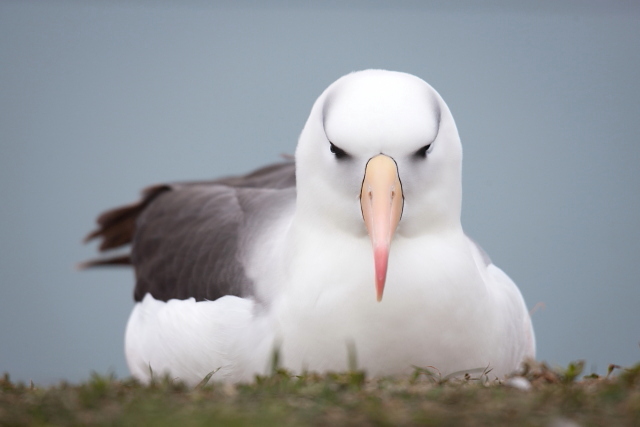
Black-browed Albatross, Germany (Photo: Felix Timmermann)
Photo of the Week, 13–19 May

Sand Martin, Gramborough Hill, Norfolk (Photo: Rob Holmes)
The improvements in digital cameras and fast AF lenses have made the capture of species such as Common Swift, Barn Swallow, House and Sand Martin an easier task in recent years writes Steve Young, and the ability to take plenty of shots at top-quality higher ISO settings has greatly increased the "hit rate" for successful shots. They are nevertheless still a difficult group to take particularly great images of and Rob Holmes' shot of a Sand Martin at Gramborough Hill, Norfolk, is one of those elusive successes.
Rob has managed to capture the Sand Martin on the turn, with the head positioned at a nice angle; it looks as though the bird has just spotted an item of prey out of the corner of its eye. The background makes a change from the usual water or blue sky and adds greatly to the image.
Congratulations to Rob on a difficult-to-take winning POTW.
Other notable images

White Wagtail, South Gare, Cleveland (Photo: Martyn Sidwell)

Grey Wagtail, Bintree Mill, Norfolk (Photo: Andy Thompson)

Whimbrel, Dublin, Co Dublin (Photo: Sean A O'Laoire)

Yellow Wagtail, Orford, Suffolk (Photo: John Richardson)

Whimbrel, Seaforth LWT (Permit only), Lancashire (Photo: Tony Conway)

Sanderling, East Chevington NWT, Northumberland (Photo: Heiko Peters)
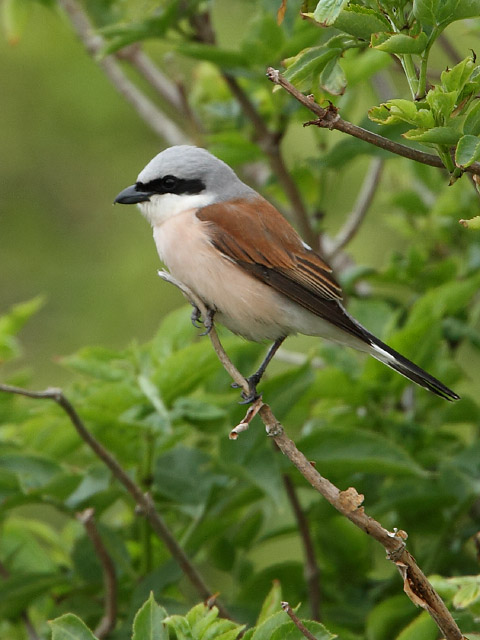
Red-backed Shrike, Landguard NR, Suffolk (Photo: Chris Mayne)

Blackbird, Westonzoyland, Somerset & Bristol (Photo: Carl Bovis)

Black-winged Stilt, Greece (Photo: Jamie MacArthur)

Green Heron, Grenada (Photo: Peter Garrity)

Hoopoe, Greece (Photo: Jamie MacArthur)

Sardinian Warbler, Land's End, Cornwall (Photo: Brian Mellow)

Black-headed Gull, Rothiemurchus, Highland (Photo: William Dickson)

Kestrel, Glasgow, Clyde (Photo: Steven Mcgrath)


